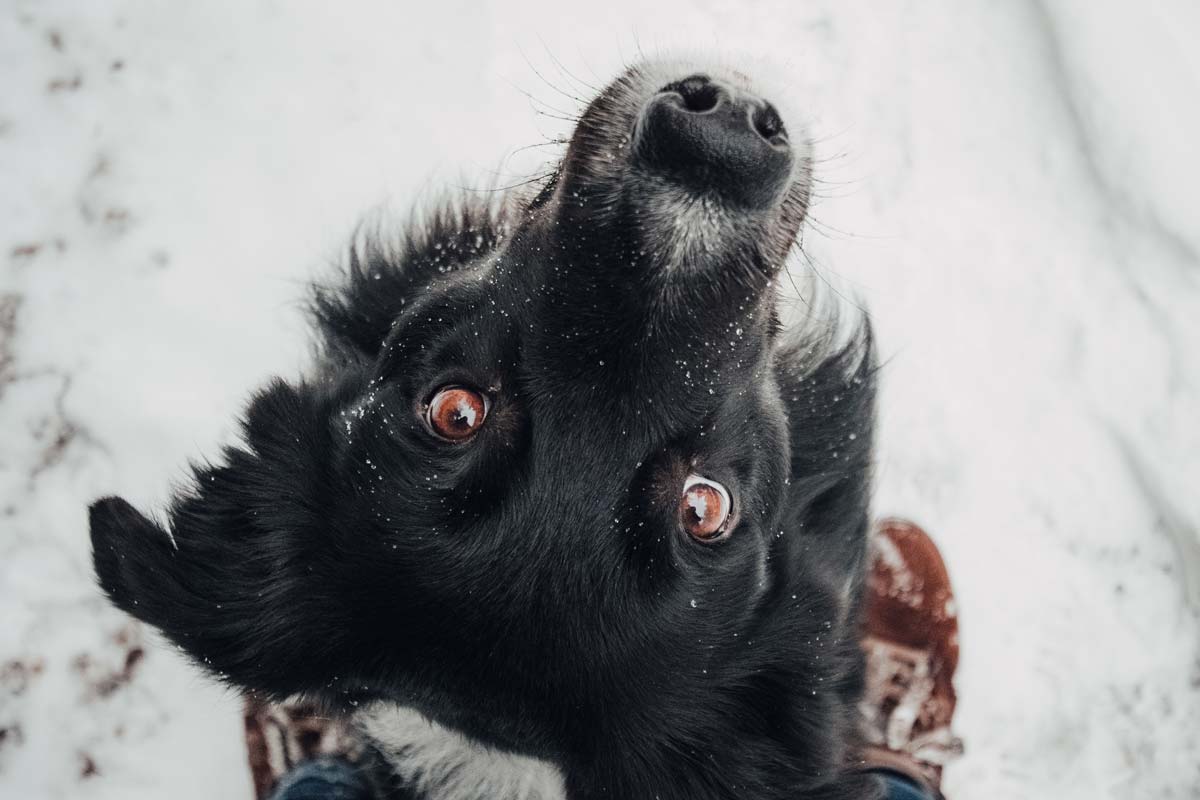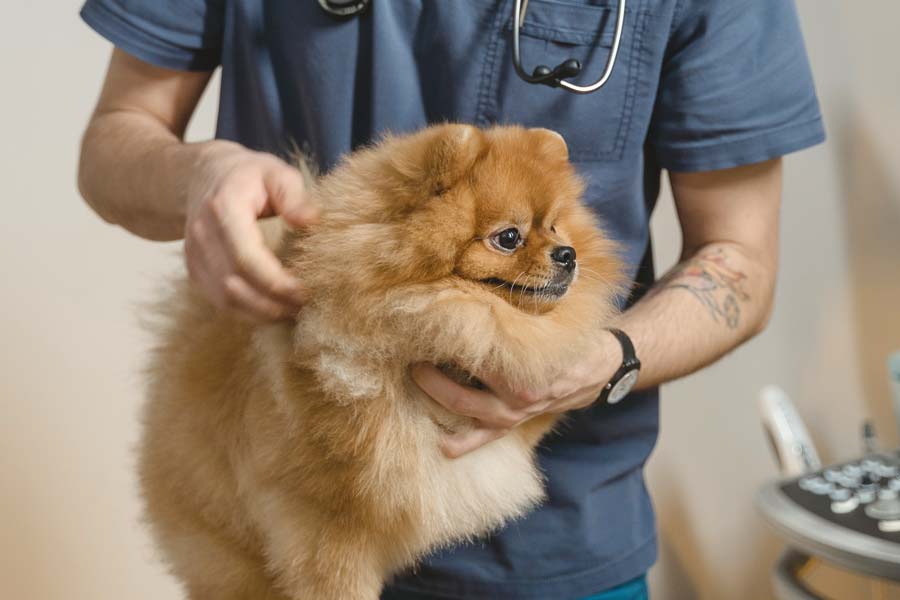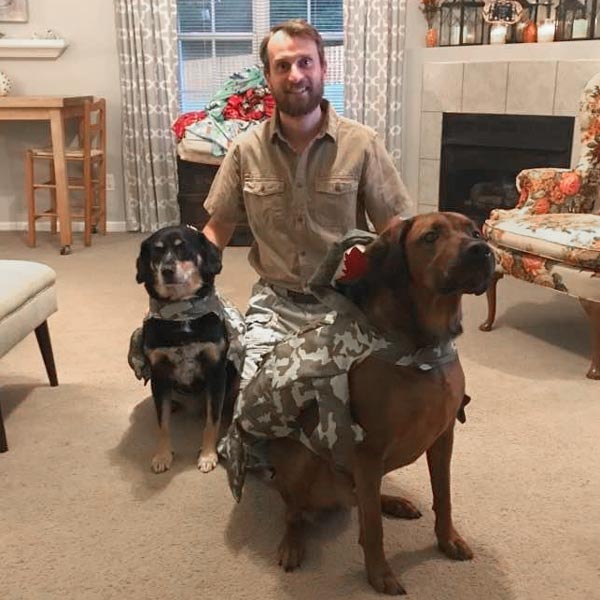What behaviors jump to the forefront of your mind when it comes to training your dog? I bet ‘sit,’ ‘stay,’ ‘lay down,’ and ‘shake’ are at the top of the list. These are some of the most common behaviors we train as dog owners.
Have you ever wondered why? Why do we train a ‘sit’ behavior? Or a ‘shake’? Sometimes we are training behaviors simply because that’s what we think we’re supposed to do when training a dog. These are all excellent behaviors to train, and we often need some easy behaviors to start out with in order to grow a relationship with our pet and the confidence in our training.
Even if this isn’t your first time training a dog, I still encourage you to start out with some simple behaviors to get the process started. A simple ‘sit’ or ‘shake’ behavior is a fantastic way to initiate and build upon the reinforcement history and relationship between you and your best friend. However, do not let the training end there.

What Are Important Behaviors to Train?
Within the zoo field - my training background and expertise - we start with training minimum standard behaviors. These are behaviors that are important in matters of emergency, husbandry, and welfare.
We train shifting behaviors, targeting, stationing, voluntary blood draws, voluntary injections, voluntary crating if applicable, voluntary weighing on scale, and, before all else, emergency recalls. Behaviors like these are what we prioritize above all other behaviors.
Imagine there is a severe storm warning and animals need to shift back inside where it’s safe. It is crucial to solidify the emergency recalls/shifting for exactly this reason.
While situations at home with our pups may not be as grim, it is still relatable. What if your dog bolts out of an open door? It is always my fear – and I’m sure I’m not the only one - that one of my pups runs right out into the street and gets hit by a car. Therefore, I suggest training an emergency recall as soon as possible.
Emergency Recalls
This is more than just a simple “come” behavior. Emergency recalls are behaviors that when you cue them, your dog drops whatever he or she is doing in the moment and comes running back to you immediately.
This applies when your dog finds itself in a dire situation that could potentially be dangerous, and you need to get them back to you immediately. Maybe they jump out of the car, run out an open door, happen upon a bear, skunk, or coyote, or find themselves in the back yard during a severe weather warning. I highly recommend having this behavior trained and ready to go in case of emergency.

Crating
Crate training, or crating, is another behavior I like to train in the beginning. There are many instances where you may need to crate or have your dog crated. Instead of chasing them around the house or trying to corral them into it, I like to have them trained to readily go in when asked.
Nothing is worse than trying to chase down your pup to get them into the crate before heading off to work. You’re going to be late again, and then you inevitably get mad at your dogs because they made you late.
Training a voluntary crating behavior will not only help make your morning routine quicker, but it also makes the crate a more positive experience. Imagine having no more complaints from neighbors due to excessive barking or whining while you are away.

Leash Training
Walking on a leash is a must if you and your pet do not have a large backyard to run around in. Walks through the neighborhood and/or park end up being routine. It would be nice then, to have a dog that walks well on leash.
All that pulling and tugging on the leash can choke them and wear and tear on your arm, assuming your furry friend is medium to large. Walks on leash should be enjoyable for both you and your dog.
This becomes an important behavior when passing by another dog on the path or anything else that may intrigue your dog’s attention (squirrel!) and cause an undesirable response.
Sit and Shake
Let’s not forget the value of a good sit behavior either. Training your dog to sit can lead to stationing, a stay behavior, or calm attentive focus on you. Having your dog sit on cue can help train other behaviors.
It can also help you navigate unwanted responses. Uh-oh, the crazy neighbor’s dog is coming by. I don’t want my dog to interact, so I cue the sit. If it’s strong enough it can focus your dog’s attention on you and distract from the potential conflict with the passing neighbor’s dog.
That fun handshake behavior can turn into ‘give me your paw so that we can trim your nails.’ So many dogs do not like being restrained for nail trims and training a voluntary nail trim stemming from the handshake behavior can go a long way. It might even impress your veterinarian.
The trick is to not progress too quickly with approximations. Take it slow, work at your dog’s pace, and let them tell you when they are ready for the next step.
The beautiful thing about trimming with clippers for this is that the sound and sensation of the clip eventually becomes a signal or bridge for the positive reinforcer or treat. Clip, treat. Pavlov’s famous study rings true, and you will start to see your dog looking for it after the clip!

Perhaps Some Party Tricks?
Don’t get me wrong, I am a sucker for some fun dog behaviors. I once trained my beagle lab mix to roll over and play dead with a good old finger gun “bang!” I was also able to teach her to weave through my legs as I walked, walk around me in circles when I waved, and spin circles with a finger twirl.
It makes for a good laugh when friends and family come over, but it also serves another purpose. My girl Molly enjoys it! The time spent with her training those behaviors and the treats and praise she receives while doing it is good for her.
Training is great mental stimulation and incredible for relationship building. Even though those trick behaviors serve no other purpose than entertainment, it is great for our connection and their mental health. So, keep training those fun party tricks! Just after some of the more important ones…




